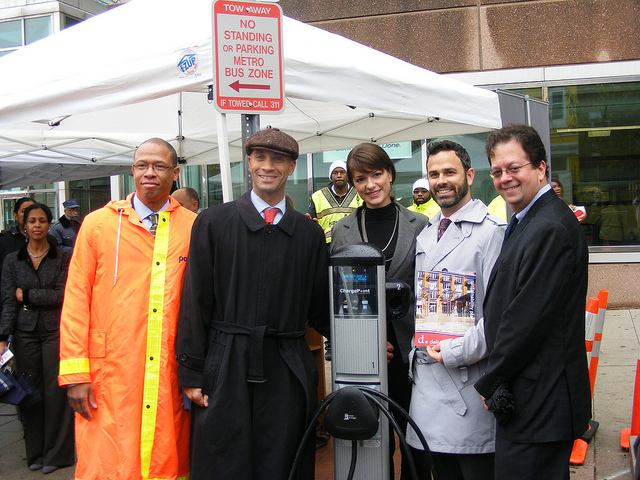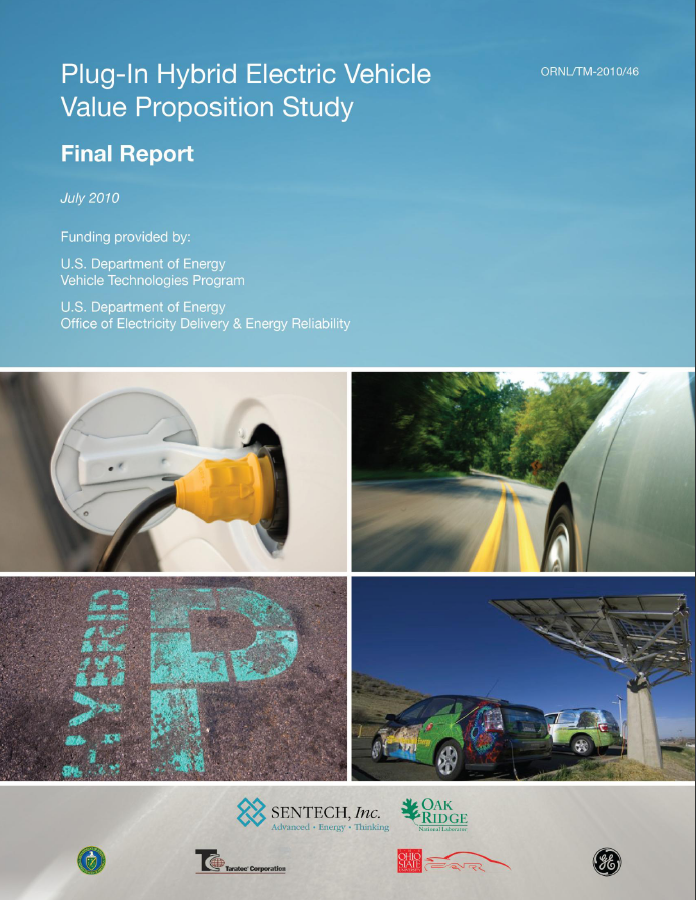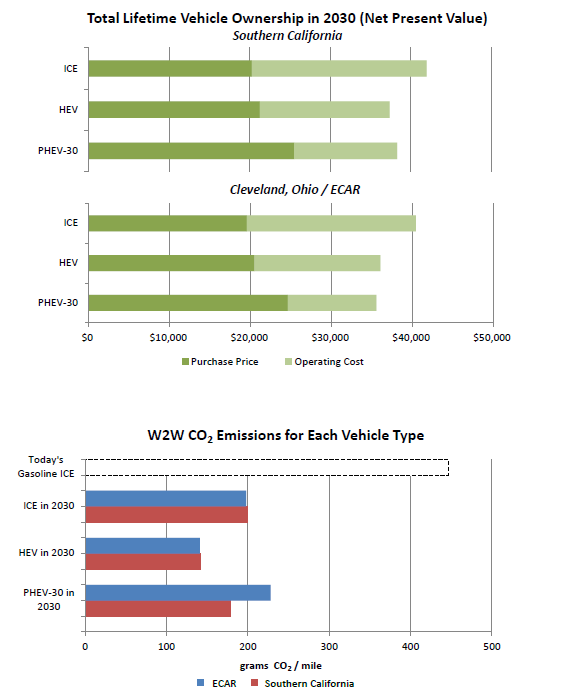Prepared by the Office of Planning, Environment and Realty, Federal Highway Administration(FHWA)
Recent Events
DOT’s National Highway Traffic Safety Administration (NHTSA) and the U.S. Environmental Protection Agency (EPA) Propose Landmark Joint Regulations to Establish Light-Duty Vehicle Greenhouse Gas (GHG) Emission Standards and Corporate Average Fuel Economy Standards (CAFE). The proposed regulations, published in the Federal Register on September 28, 2009, have two goals: reduce GHG emissions and improve fuel economy. The proposal follows from the National Fuel Efficiency Policy announced by President Obama on May 19, 2009, responding to the country’s critical need to address global climate change and to reduce oil consumption. EPA is proposing the first-ever GHG emissions standards under the Clean Air Act; NHTSA is proposing CAFE standards under the Energy Policy and Conservation Act. These standards apply to passenger cars, light-duty trucks, and medium-duty passenger vehicles, covering model years 2012 through 2016 and would result in an overall fleet fuel economy of 35.5 mpg. Comments must be received on or before November 27, 2009. To read the proposed rulemaking and find out how to submit comments, go to http://edocket.access.gpo.gov/2009/E9-22516.htm. (See related article on trends in fuel economy from 1923-2006)
Climate Change Bill Introduced in the Senate. On September 30, Senators Kerry and Boxer introduced the Clean Energy Jobs and American Power Act “to create clean energy jobs, promote energy independence, reduce global warming pollution, and transition to a clean energy economy.” The bill would add two new sections (Titles VII and VIII) to the Clean Air Act, which would set declining limits on GHG emissions and establish a Pollution Reduction Investment (PRI) program, also known as cap-and-trade. The Act would require EPA to establish 1) GHG emission standards for new heavy-duty vehicles and engines, and for nonroad vehicles and engines and 2) to standardized emission models and related methodologies for States and MPOs. It would create an emissions reduction program, allowing DOT to provide grants to States and MPOs to help them reduce GHG emissions from the transportation sector. It would establish goals to reduce GHG emissions from the nation’s largest stationary sources-initially around 7,500 facilities that account for nearly three-quarters of U.S. carbon pollution-to 97% of 2005 levels by 2012, 80% by 2020, 58% by 2030, and 17% by 2050 (versus a reduction to 20% of 2005 GHG emissions by 2050 called for in the House bill, the American Security and Clean Energy Act, introduced by Congressmen Waxman and Markey, which passed the House on June 26, 2009). The Boxer-Kerry bill also would establish a National Climate Change Adaptation Program and require EPA to distribute formula-based funding to States for projects and activities that address impacts on coastal watersheds.
EPA Finalizes Nation’s First GHG Emissions’ Reporting System/Monitoring to Begin in 2010. On January 1, 2010, EPA will, for the first time, require large, stationary-source emitters of GHGs to begin collecting data under a new reporting system, which will cover approximately 85 percent of the nation’s GHG emissions and apply to roughly 10,000 facilities. The reporting system will provide a better understanding of where GHGs are coming from and will guide development of policies and programs to reduce emissions. The data will also allow businesses to track their emissions, compare them with those of similar facilities, and provide assistance in identifying cost-effective ways to reduce emissions in the future. Fossil fuel and industrial GHG suppliers, motor vehicle and engine manufacturers, and facilities that emit 25,000 metric tons or more of carbon dioxide equivalent (CO2e) per year will be required to report GHG emissions data to EPA annually. More information on the new reporting system and reporting requirements is available at:http://epa.gov/climatechange/emissions/ghgrulemaking.html. State and local officials interested in additional information about developing and implementing cost-effective climate and energy strategies that help further environmental goals and achieve public health and economic benefits may visit: http://epa.gov/cleanenergy/energy-programs/state-and-local/index.html.
U.S. Climate Envoy Elaborates on President Obama’s Speech at United Nations Climate Summit Regarding Climate Change and December U.N. Conference of Parties (COP15). Speaking at a White House press briefing after the President’s climate change speech at the U.N., Todd Stern, the U.S. climate envoy, said that the U.S. would still have a solid bargaining position in Copenhagen even if the Administration fails to push its own GHG legislation through Congress before the intergovernmental conference. “We would like to see the maximum possible progress… on our domestic legislation,” Stern said. “In the event that there’s not domestic legislation done by the time of Copenhagen, we will negotiate with that in mind. But certainly the most progress we can get would be helpful.” At the U.N., the President said that the major developing countries, where virtually all of the growth in emissions over the next 30 years is going to occur, also have to take actions. Elaborating on that Stern said “[The major developing countries] have to stand behind those actions to the same degree that the US and other developed countries do. The President is making that very clear. And that has not traditionally been the way that the climate change negotiations and the whole climate change international debate have gone on.” (See related “FYI” article.)
Driving and the Built Environment: The Effects of Compact Development on Motorized Travel, Energy Use, and CO2 Emissions (TRB Special Report 298) Published. This recently-released report examines the relationship between land development patterns and vehicle miles traveled (VMT) in the United States to assess whether petroleum use, and by extension GHG emissions, could be reduced by changes in the design of development patterns. The report estimates the contributions that changes in residential and mixed-use development patterns and transit investments could make in reducing VMT by 2030 and 2050, and the impact this could have in meeting future transportation-related GHG reduction goals. Increasing population and employment density in metropolitan areas could reduce vehicle travel, energy use, and CO2 emissions from less than 1 percent up to 11 percent by 2050 compared to a base case for household vehicle usage, depending on the assumptions used. Commissioned papers used by the committee to help develop Special Report 298 are available online. A four page summary of and a press release onthe report is also downloadable at http://books.nap.edu/catalog.php?record_id=12747&utm_medium=etmail&utm_source=National%20Academies%20Press&utm_campaign=NAP+mail+new+09.8.09&utm_content=Downloader&utm_term=. On Wednesday, October 21, TRB will be hosting a webinar to explore the findings of this congressionally-mandated study. Space is limited. To reserve a “seat,” go to https://www1.gotomeeting.com/register/606169224.
NSF Awards NCSE $1.67M Climate Change Education Grant. The National Council for Science and the Environment (NCSE) has been awarded a three-year grant of $1,666,820 by the National Science Foundation to create a nationwide cyber-enabled learning community for solutions to climate change to be known as CAMEL (Climate, Adaptation, and Mitigation e-Learning). CAMEL will engage experts in science, policy and decision-making, education, and assessment in the production of a virtual toolbox of curricular resources designed for teaching climate change causes, consequences, and solutions.The project was developed by theCouncil of Environmental Deans and Directors (CEDD), which is managed by NCSE. More information on CAMEL, including a PowerPoint presentation by principal investigator David Hassenzahl and a video thereof, can be found at the CEDD website (http://ncseonline.org/Updates/cms.cfm?id=3274).
U.S. Energy Information Administration (EIA) Releases Its Annual Energy Review (AER).The AER is EIA’s primary report of historical annual energy statistics. For many series, data begin with the year 1949. Included are data on total energy production, consumption, and trade; overviews of petroleum, natural gas, coal, electricity, nuclear energy, renewable energy, international energy, as well as financial and environmental indicators; and data unit conversion tables. Two especially interesting graphics are for Primary Energy Consumption by Source and Sector, 2008 (the most recent year for which data is available) and the Petroleum Overview, 1949-2008, which shows how closely petroleum consumption in the U.S. tracks with petroleum imports (see below).


Publications released by University of Michigan Transportation Research Institute, Ann Arbor, Michigan:
Effect of “Cash for Clunkers” Program on Overall Fuel Economy of Purchased New Vehicles. September 2009. Conclusions: Based on data from October 2007 through June 2009 and using unemployment rate and price of gasoline as predictors of the fuel economy, the program improved the average fuel economy of all vehicles purchased by 0.6 mpg in July 2009 and 0.7 mpg in August 2009.
Economic Indicators as Predictors of Number and Fuel Economy of Purchased New Vehicles. July 2009. Conclusions: During October 2007 through June 2009, average fuel economy of purchased light-duty vehicles improved by a substantial amount-1.1 mpg-as a result of unemployment and price of gasoline; however, significantly fewer vehicles were purchased as a result of unemployment. The price of gasoline did not reduce the number of vehicles purchased.
Recent Reductions in Carbon Dioxide Emissions from New Vehicles. July 2009. Conclusions: Improved fuel economy of purchased new vehicles and decrease in distances driven, resulted in lower CO2 emissions per driver from purchased new vehicles were lower in November 2007 through April 2009, when compared to October 2007. The greatest reduction in emissions-12%-occurred in July 2008. The reduction in April 2009 (the latest month examined) was 8%.
Mechanisms involved in recent large reductions in U.S. road fatalities. Injury Prevention, June 2009. Conclusion: One factor in the large reductions in U.S. road fatalities was the decrease in leisure driving related to the price of gasoline.
Fuel efficiency of vehicles on U.S. roads: 1923-2006. Energy Policy, 2009. Conclusions: Overall fleet fuel efficiency decreased from 14 mpg in 1923 to 11.9 mpg in 1973. Starting in 1974, efficiency increased rapidly to 16.9 mpg in 1991. Thereafter, improvements have been small, with efficiency reaching 17.2 mpg in 2006.
State and Local News
Delaware Valley Regional Planning Commission (DVRPC) Releases Regional GHG Emissions Inventory Available for Download at No Charge. This inventory will help regional policy makers and citizens understand the sources of GHG emissions so they can make well-informed decisions for regional and local policies to reduce them. In addition, the inventory has been allocated to the municipal level, supporting local action in cities, boroughs, and townships across the region. The U.S. EPA is actively engaged with this work as a pilot for developing a standard national protocol for carrying out GHG emissions inventories at the metropolitan level.
U.S. EPA Offers Free, Downloadable Webinars: Greenhouse Gas Inventory 101 for Local, Regional, and State Governments covering:
Creating an Inventory. Topics include understanding the purpose and scope of a GHG inventory, inventories vs. registries, setting a boundary, setting a baseline, quantification approaches, certification and reporting protocols, comparability, and level of effort.
Translating Inventory Results into Action. Topics include describing the various uses of GHG inventories, including benchmarking, tracking emissions and progress over time, setting emission reduction goals, policy options for meeting goals, evaluating policy options, and processes for setting goals and policies.
State Inventory Tool (SIT) Training. Topics include background information on the development of the SIT modules and a live demonstration of the CO2 from Fossil Fuel Combustion Module, Natural Gas and Oil Module, Synthesis Module, and Projection Tool.
Announcements
Association of Metropolitan Planning Organizations’ 2009 Annual Conference to be held October 28-30, 2009 in Savannah, GA. There will be sessions on Critical Issues Related to Land Use Planning in Transportation and Livability, plus a pre-conference workshop on Practical Examples of Integrating Land Use Planning with Transportation Planning. Three sessions will be devoted to climate change:
Strategies to Reduce GHG Emissions with presentations on Moving Cooler by David Jackson from Cambridge Systematics; TRB Special Report on Land Use, VMT, and GHG by Professor Jose Gomez-Ibanez, Harvard Kennedy School; and Global Climate Change: A “Top 10” List for MPOs by Cindy Burbank, Parsons Brinckerhoff.
GHG Emissions and Air Quality Standards with presentations on Alternative Regulatory and Incentive-Based Approaches to Reducing GHG Emissions: Potential Implications for MPOs by Michael Grant and Janet D’Ignazio, ICF International, and Implementing AQ Standards in the Context of New Planning Changes by Tracy Clymer, Cambridge Systematics. The session will be moderated by Sarah Siwek, Sarah Siwek & Associates.
Climate Change: Adaptation with presentations on Adapting to Climate Change Impacts by Michael Culp and Rob Ritter, FHWA, and Adaptation in Response to Global Climate Change: International Best Practices in Long Range Planning by Michael Flood and Chris Dorney, Parsons Brinckerhoff.
National Association of Development Organizations (NADO) Holds National Rural Transportation Conference in coordination with the AMPO conference. A climate change session on October 29 will cover strategies for beginning to incorporate climate change into regional transportation planning in rural and small metro areas. FHWA will make a presentation and Stephen Lawe, RSG Inc., will talk about a new GHG emissions model that may be useful for RPOs and small MPOs that don’t have their own modeling capabilities.
FYI
What are the United Nations Climate Change Conference in Copenhagen, Denmark and COP15 that I’ve been hearing about? The 15th annual Conference of the Parties (COP 15), which will be held from December 7-18, 2009 in Copenhagen, Denmark, is the culmination of a series of meetings among the 192 parties to the United Nations Framework Convention on Climate Change (UNFCCC). The COP adopt decisions and resolutions related to reducing GHG emissions, which make up a detailed set of rules for implementation of the Convention. Concurrently with the COP, there is a Conference of the Parties to the Kyoto Protocol, which was adopted in 1997 and came into force in 2005 after a sufficient number of countries had ratified it. Together the Conferences are called the United Nations Climate Change Conference.
Next month: What is the United Nations Framework Convention on Climate Change (UNFCCC)?
Previous Newsletters
If you have any suggestions for inclusion in future issues of Transportation and Climate Change News, or if someone forwarded this newsletter to you and you would like to receive it directly in the future, please send your suggestions or request to Kathy Daniel at Kathy.Daniel@dot.gov.













![Reblog this post [with Zemanta]](http://img.zemanta.com/reblog_e.png?x-id=5ec5518a-269e-416e-92d3-94f413123186)

![Reblog this post [with Zemanta]](http://img.zemanta.com/reblog_e.png?x-id=c23d4006-e464-4ea1-a19c-cdede79eaac1)




